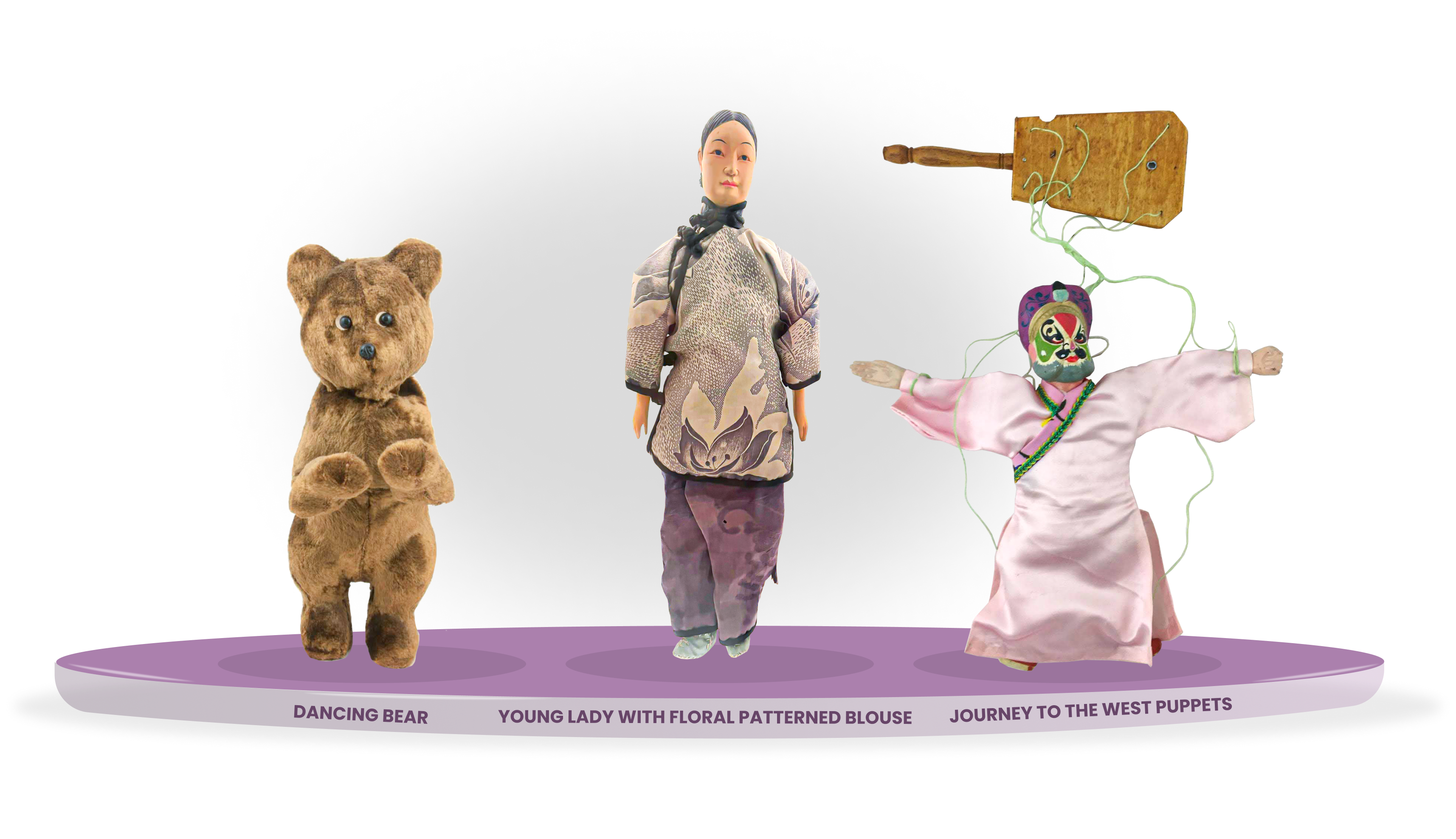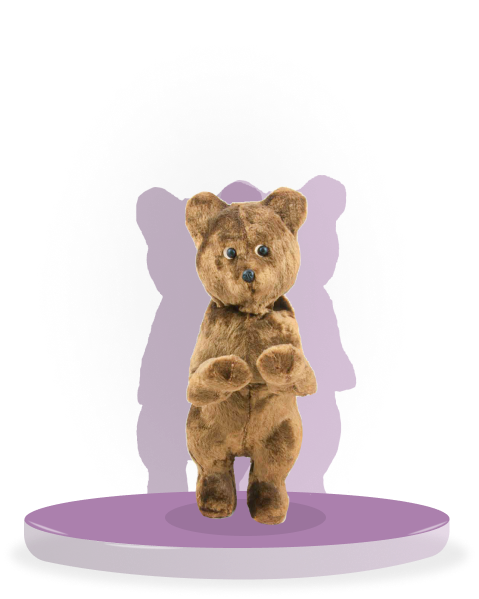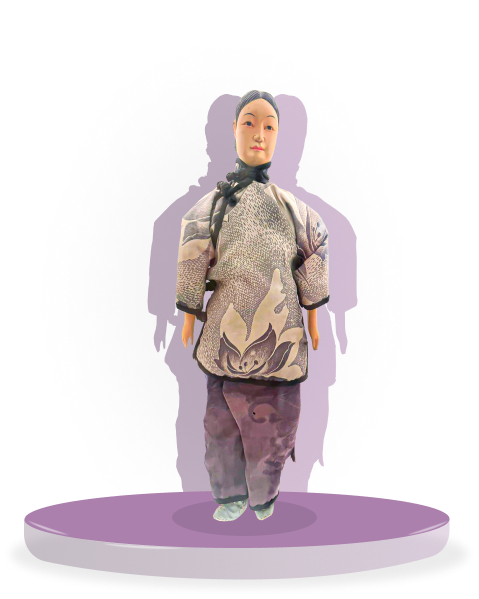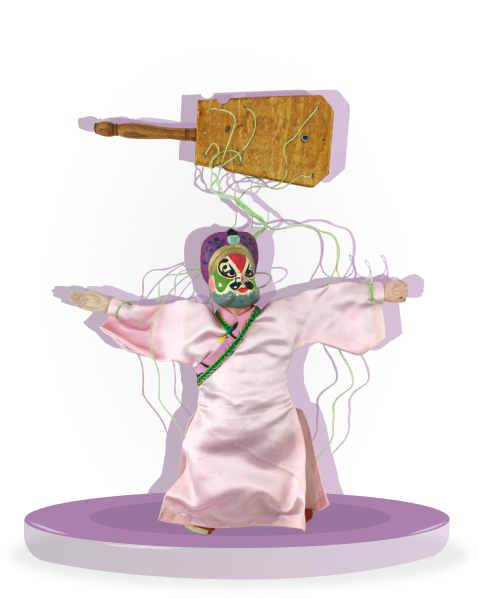
When approaching the topic of toys, the subject of playthings often evoke a sense of familiarity and happy childhood memories for adults. However, the act of playing can also be considered as the ‘work of children’. A variety of toys can be used to stimulate learning and children can benefit by developing useful skills. Particularly for stuffed animals and dolls, children learn to exercise empathy and seek comfort from caring for their cuddly companions. On the other hand, puppets can also teach children to pick up social skills through storytelling and role-playing.

The exhibition will evoke a sense of familiarity and rekindle our childhood memories through the classic collection of Teddy Bears from Around the Worldas our childhood cuddly companions as well as to document the diverse collection of Dolls from Around the World and investigate the social history of specific dolls from different cultures. In addition, the exhibition will also highlight renowned Puppetswhich have served as the favourite entertainment for children and adults alike.


Described as the world’s most popular soft toy, teddy bears have been in the market for more than a century and continue to thrive in popularity among children today. Apart from simply being a cuddly plaything, children would often affectionately name their own teddy bears and grow extremely attached to them since they provide a sense of security, comfort and companionship. Although there is a wide array of teddy bears designed by seamstresses and manufacturers from around the world, teddy bears are still recognised as a symbol of love and affection internationally.
Under the collection of Teddy Bears From Around The World, our collection will delve deep into the extraordinary narratives of renowned teddy bear makers from Germany, United Kingdom and China through the collection of Steiff Bears, Merrythought Bears and Shanghai Doll Factory Bears and International Bears respectively.

International Bears
Teddy bears are one of the most common types of stuffed animal toys worldwide, and are commonly regarded as the ideal ‘first’ toy for a young child. Many people even keep their teddy bears from their childhood for years, even after they have grown up or even had a child of their own. While teddy bears may seem like a universally popular toy, they are actually a relatively new toy that only gained prominence in the early 20th century. Following the boom in globalisation and international trade after World War II, teddy bears gained worldwide recognition and popularity leading to many toymakers producing their own international bears.
The teddy bear ‘craze’ began in 1902, after a political cartoon was published in the United States of America featuring then-President Theodore “Teddy” Roosevelt refusing to shoot a bear. Many famous teddy bear companies including Steiff (Germany) and Ideal Toy Company (USA) first released their original teddy bear designs in this year, with other companies including Merrythought (Great Britain) and Chiltern (Great Britain) releasing their teddy bears between the 1910s to 1930s.
Today you can find teddy bears produced all over the world in countless colours and designs, some of which have been inspired by uniquely local bears such as the panda. Some notable teddy bears have become popular characters and franchises in their own right such as Paddington Bear, Pudsey Bear, and Winnie the Pooh. Some teddy bears from television shows or movies have also gone on to have their own merchandise lines including Teddy (from the Mr Bean TV and cartoon series) and Rilakkuma (a Japanese character launched by San-X in 2003).

Dancing Bear
Shelf 1 Row 5
No animal is more closely associated with Russia than the Eurasian brown bear. The use of the bear as an allusion for the country has been around since the 16th century; while the comparison is usually drawn by outsiders, bears have also appeared as Russian mascots, or in Russian logos. The ubiquity of this symbol has, over time, caused it to be considered as trite, or stereotypical.
This clockwork “Dancing Bear” toy combines the iconic image of a Eurasian brown bear with the Soviet affinity for mechanical toys. Clockwork toys were highly valued in Soviet Russia, as educators believed that the mechanical principles involved in the design and play of such toys gave children an opportunity to develop an interest in engineering, one of the most revered branches of knowledge in the USSR. When the “Dancing Bear” is wound up, it spins around, moves its hands up and down, and shakes its head.

Dancing Bear
Maker
Year of Make
Material
Country of Origin
Unknown
c.1950s
Felt and Fabric
Union of Soviet Socialist Republics

The origin of dolls in the form of miniature human beings has its roots in ritualistic practices from thousands of years ago. It was only in the recent century, dolls were now manufactured widely and often associated as a girl’s plaything. Traditionally, these dolls were designed to look like miniature babies where young children would play as if they were caring for a child. As such, playing with dolls would help them develop social skills such as empathy.
However, not all dolls are made as playthings. Particularly for vintage designer dolls, some of them were intricately hand painted and designed with fragile materials such as bisque or porcelain, and are highly sought-after by collectors from around the world.
Under the collection from Dolls From Around The World, our collection will explore the specific social history of dolls through the collection of Door of Hope Dolls and investigate the commercial success and the cultural aspects of Dolls Produced Internationally.

Door of Hope Dolls
In early 20th century China, the country was going through a tumultuous period in its history, as many countries were trying to create their own spheres of influence to seize the country’s immense trading potential. Against this backdrop of political unrest and social turmoil, the Door of Hope mission was set up in Shanghai in 1901 with a focus to improve and uplift the lives of Chinese girls and children living in poverty. At the time, many young destitute girls were illiterate and faced many threats such as early betrothal, or being sold or trafficked into terrible conditions.
In early 20th century China, the country was going through a tumultuous period in its history, as many countries were trying to create their own spheres of influence to seize the country’s immense trading potential. Against this backdrop of political unrest and social turmoil, the Door of Hope mission was set up in Shanghai in 1901 with a focus to improve and uplift the lives of Chinese girls and children living in poverty. At the time, many young destitute girls were illiterate and faced many threats such as early betrothal, or being sold or trafficked into terrible conditions.
Girls who were brought to the mission were taught reading, writing, math, handicraft skills, and personal hygiene. To practice their sewing, embroidery, and knitting skills, the girls would work on clothing for the Door of Hope dolls produced by the mission. They were paid for their work on the dolls, making it an important milestone in training them for an independent life after they left the mission.These dolls are still highly valued today for their depiction of traditional costumes in China. Some of the most famous dolls include the Wedding Couple, Amah, and Policeman. At the time, class and status in Chinese society was deeply defined by what you wore – making these dolls a time capsule into contemporary life. Each wooden doll was handcrafted so no two dolls look exactly alike, and fitted with elaborate outfits that included headwear, jewellery, and intricate details such as frog closures and brocade silk fabrics.

Young Lady with Floral Patterned Blouse
Shelf 2 Row 1
Women’s fashion in 1920s China was intertwined with the shifting attitudes towards women’s role in society. In pursuit of science, democracy, and freedom, women broke out of their traditional familial roles to seek higher education, economic independence, and freedom in love and marriage.
Urban, intellectual women took the lead in wearing what was known as wenming xinzhuang, or “civilised new clothes”, consisting of an inverted sleeve short jacket and long skirt. Inspired by the men’s changshan, this new fashion was a rebellion against the conservative and cumbersome traditional clothing, which constrained women’s movement and freedom.
The “Young Lady with Floral Patterned Blouse” doll shows different interpretations of the civilised new clothes that women wore in early 20th century China. Her outfit is thoughtfully sewn and embroidered by young girls living in the Door of Hope Mission; in doing so, these girls were given the opportunity to render an optimistic vision of the improving status of women and, by extension, their own futures.

Young Lady with Floral Patterned Blouse
Maker
Year of Make
Material
Country of Origin
Door of Hope
1920s – 1939
Wood and Fabric
China

Puppetry is known traditionally as a form of theatrical performance and entertainment which involves the manipulation of a figure (often in the form of human or animals) as puppets. The sequence of movements of puppets are usually choreographed to popular narratives or plot lines.
Apart from being a form of entertainment, puppets have also evolved to function as toys for children. By allowing the children to freely interact and manipulate the puppets, such playthings can help them develop social skills and their imagination.
Under the collection of Puppetry, our collection will feature a variety of puppets from the popular British seaside slapstick such as Punch and Judy, as well as other renowned narratives from German Kasperle Theatre, Chinese folklore Journey to The West and Bruce Lee in the form of marionettes, finger and hand puppets.

Journey to The West
Xiyouji, also known as Journey to the West, is the title of a 16th-century novel that belongs to the “four most wondrous classical novels” of China. It is believed to have its historical basis in an actual pilgrimage of the Buddhist monk Xuanzang (c. 596-664) to India.
Composed of 100 chapters, the novel retains a broad outline of Xuanzang’s own account of the pilgrimage, Great Tang Records on the Western Regions, but adds elements from Chinese folktales, Chinese mythology, Confucianism, Buddhism and Taoism.
The fictionalised pilgrimage in the novel features Xuanzang travelling to the west in search of a sacred text together with his four nonhuman disciples: the magically gifted Monkey, the slow-witted and clumsy Pigsy, the fish spirit Sandy, and Dragon Horse. The group journeys towards seeking enlightenment by virtue of cooperation.
The story of Xuanzang’s pilgrimage has enthralled people all over the world for centuries. The story was transmitted orally through folktale performances during the Song Dynasty (960 – 1279), before coalescing into the earliest known version of the novel, The Story of How Tripitaka of the Great Tang Procures the Scriptures. It culminated into theatrical dramas in the Yuan Dynasty (1279 – 1368), and the official writing was only established in 1590.
Regardless of the medium, the story’s appeal derives from its shifting of the lens from the wealthy and cultured classes to the marginalised. Although the religious aspect is heavily present, it is used more as a background while its elements show an esoteric and archetypal world beyond religion. Its biting satire of society and the bureaucratic class, along with its allegorical presentation of human perseverance, are themes that are still relevant today, which stands to reason why it still has a place in today’s society.

Journey to the West’ Puppets
Shelf 6 Row 5
Since the beginning of the Common Era, Chinese puppetry was linked to ritual and auspicious events. This changed at the beginning of the Qing dynasty (1644-1912), by which point it had also developed into a form of popular entertainment, closely linked with local opera forms. The advent of the Cultural Revolution brought about massive changes for Chinese puppetry, destroying the practice of rural private troupes, while bolstering the practice of state-supported urban troupes, which performed a repertoire of politically acceptable works.
These “Journey to the West” marionette puppets were made in Cultural Revolution China, and as with most consumer products from the period, they are unmarked. Although the Cultural Revolution sought to get rid of many pre-communist elements of Chinese culture, classic stories like “Journey to the West” were also repackaged as revolutionary material – in a 1961 poem, Mao Zedong hailed Sun Wukong as a “wonder-worker”.

Journey to the West Puppets
Maker
Year of Make
Material
Country of Origin
Unknown
c.1960s
Wood and Fabric
China

